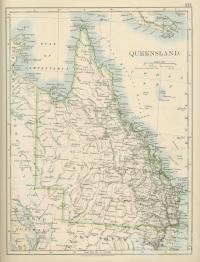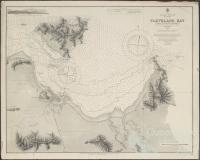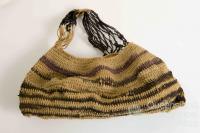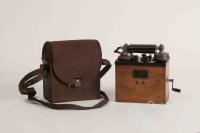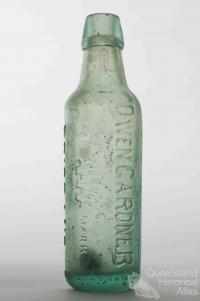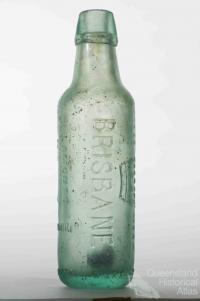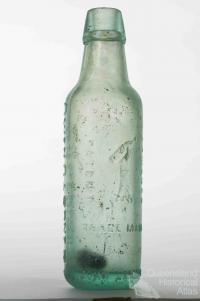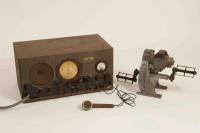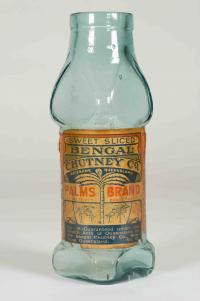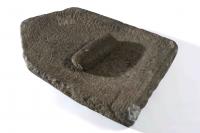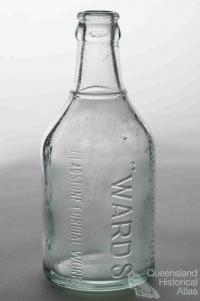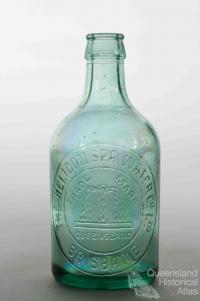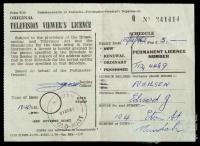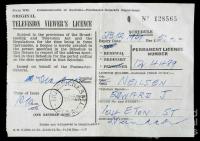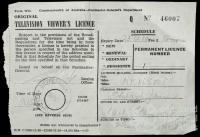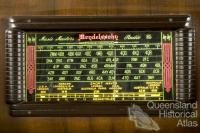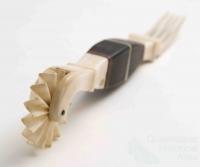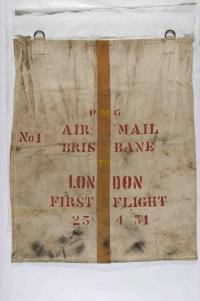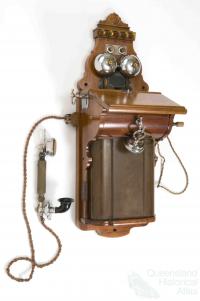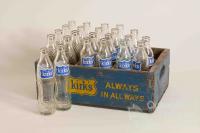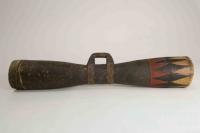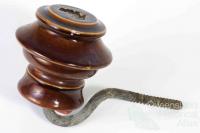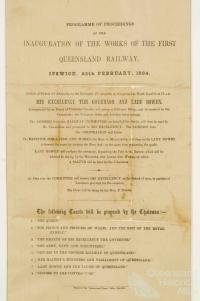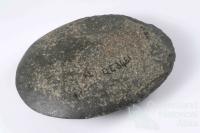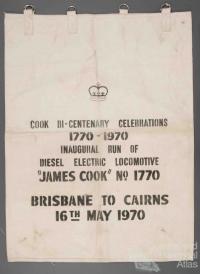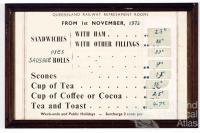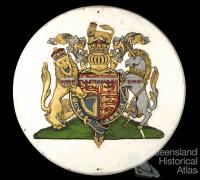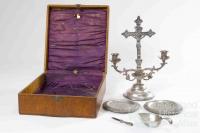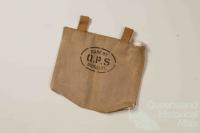- Home
- Quintessential Queensland
- Distinctiveness
- Perceptions
- Perceptions: how people understand the landscape
- From runs to closer settlement
- Geological survey of Queensland
- Mapping a new colony, 1860-80
- Mapping the Torres Strait: from TI to Magani Malu and Zenadh Kes
- Order in Paradise: a colonial gold field
- Queensland atlas, 1865
- Queensland mapping since 1900
- Queensland: the slogan state
- Rainforests of North Queensland
- Walkabout
- Queenslanders
- Queenslanders: people in the landscape
- Aboriginal heroes: episodes in the colonial landscape
- Australian South Sea Islanders
- Cane fields and solidarity in the multiethnic north
- Chinatowns
- Colonial immigration to Queensland
- Greek Cafés in the landscape of Queensland
- Hispanics and human rights in Queensland’s public spaces
- Italians in north Queensland
- Lebanese in rural Queensland
- Queensland clothing
- Queensland for ‘the best kind of population, primary producers’
- Too remote, too primitive and too expensive: Scandinavian settlers in colonial Queensland
- Distance
- Movement
- Movement: how people move through the landscape
- Air travel in Queensland
- Bicycling through Brisbane, 1896
- Cobb & Co
- Journey to Hayman Island, 1938
- Law and story-strings
- Mobile kids: children’s explorations of Cherbourg
- Movable heritage of North Queensland
- Passages to India: military linkages with Queensland
- The Queen in Queensland, 1954
- Transient Chinese in colonial Queensland
- Travelling times by rail
- Pathways
- Pathways: how things move through the landscape and where they are made
- Aboriginal dreaming paths and trading ways
- Chinese traders in the nineteenth century
- Introducing the cane toad
- Pituri bag
- Press and the media
- Radio in Queensland
- Red Cross Society and World War I in Queensland
- The telephone in Queensland
- Where did the trams go?
- ‘A little bit of love for me and a murder for my old man’: the Queensland Bush Book Club
- Movement
- Division
- Separation
- Separation: divisions in the landscape
- Asylums in the landscape
- Brisbane River
- Changing landscape of radicalism
- Civil government boundaries
- Convict Brisbane
- Dividing Queensland - Pauline Hanson’s One Nation Party
- High water mark: the shifting electoral landscape 2001-12
- Hospitals in the landscape
- Indigenous health
- Palm Island
- Secession movements
- Separate spheres: gender and dress codes
- Separating land, separating culture
- Stone walls do a prison make: law on the landscape
- The 1967 Referendum – the State comes together?
- Utopian communities
- Whiteness in the tropics
- Conflict
- Conflict: how people contest the landscape
- A tale of two elections – One Nation and political protest
- Battle of Brisbane – Australian masculinity under threat
- Dangerous spaces - youth politics in Brisbane, 1960s-70s
- Fortress Queensland 1942-45
- Grassy hills: colonial defence and coastal forts
- Great Shearers’ Strike of 1891
- Iwasaki project
- Johannes Bjelke-Petersen: straddling a barbed wire fence
- Mount Etna: Queensland's longest environmental conflict
- Native Police
- Skyrail Cairns (Research notes)
- Staunch but conservative – the trade union movement in Rockhampton
- The Chinese question
- Thomas Wentworth Wills and Cullin-la-ringo Station
- Separation
- Dreaming
- Imagination
- Imagination: how people have imagined Queensland
- Brisbane River and Moreton Bay: Thomas Welsby
- Changing views of the Glasshouse Mountains
- Imagining Queensland in film and television production
- Jacaranda
- Literary mapping of Brisbane in the 1990s
- Looking at Mount Coot-tha
- Mapping the Macqueen farm
- Mapping the mythic: Hugh Sawrey's ‘outback’
- People’s Republic of Woodford
- Poinsettia city: Brisbane’s flower
- The Pineapple Girl
- The writers of Tamborine Mountain
- Vance and Nettie Palmer
- Memory
- Memory: how people remember the landscape
- Anna Wickham: the memory of a moment
- Berajondo and Mill Point: remembering place and landscape
- Cemeteries in the landscape
- Landscapes of memory: Tjapukai Dance Theatre and Laura Festival
- Monuments and memory: T.J. Byrnes and T.J. Ryan
- Out where the dead towns lie
- Queensland in miniature: the Brisbane Exhibition
- Roadside ++++ memorials
- Shipwrecks as graves
- The Dame in the tropics: Nellie Melba
- Tinnenburra
- Vanished heritage
- War memorials
- Curiosity
- Curiosity: knowledge through the landscape
- A playground for science: Great Barrier Reef
- Duboisia hopwoodii: a colonial curiosity
- Great Artesian Basin: water from deeper down
- In search of Landsborough
- James Cook’s hundred days in Queensland
- Mutual curiosity – Aboriginal people and explorers
- Queensland Acclimatisation Society
- Queensland’s own sea monster: a curious tale of loss and regret
- St Lucia: degrees of landscape
- Townsville’s Mount St John Zoo
- Imagination
- Development
- Exploitation
- Transformation
- Transformation: how the landscape has changed and been modified
- Cultivation
- Empire and agribusiness: the Australian Mercantile Land and Finance Company
- Gold
- Kill, cure, or strangle: Atherton Tablelands
- National parks in Queensland
- Pastoralism 1860s–1915
- Prickly pear
- Repurchasing estates: the transformation of Durundur
- Soil
- Sugar
- Sunshine Coast
- The Brigalow
- Walter Reid Cultural Centre, Rockhampton: back again
- Survival
- Survival: how the landscape impacts on people
- Brisbane floods: 1893 to the summer of sorrow
- City of the Damned: how the media embraced the Brisbane floods
- Depression era
- Did Clem Jones save Brisbane from flood?
- Droughts and floods and rail
- Missions and reserves
- Queensland British Food Corporation
- Rockhampton’s great flood of 1918
- Station homesteads
- Tropical cyclones
- Wreck of the Quetta
- Pleasure
- Pleasure: how people enjoy the landscape
- Bushwalking in Queensland
- Cherbourg that’s my home: celebrating landscape through song
- Creating rural attractions
- Festivals
- Queer pleasure: masculinity, male homosexuality and public space
- Railway refreshment rooms
- Regional cinema
- Schoolies week: a festival of misrule
- The sporting landscape
- Visiting the Great Barrier Reef
By:
Luke Keogh
By:
Geraldine Mate Let the four wheel drive skid to a stop and from the height of the sandhill take in the river moving south. This water trailing through the desert creates a pathway to renewal. There is green lignum bursting into large balls, there are small hardwoods growing with the movement of the water, and the motion of the liquid appears to take some of the blood out of the red sand. Look over the floodplain and see the riparian zone so green that you might be confused when labelling this a desert. But that is the nature of Queensland’s far west: boom and bust. And so like all things on a pathway this water is moving but its transience is at the whim of something else, in this case of clouds, climate and topography.
So long had it been since rain had come down Eyre Creek in the Simpson Desert National Park that an experienced conservation biologist watching this scene could only gasp ‘bloody hell’ before reaching for his camera. This is Queensland’s last flowing water before reaching the western border; in the distance there is another red sandhill poking its head into the landscape and from there the sandhills keep rolling into Arrendte country, completely oblivious of a border segregating the epic red song of sand and spinifex. The water trails south until it catches the Diamantina and the Warburton in South Australia. After this meeting it reaches Lake Eyre, the lowest point in Australia, and here it will wait in the lake for the sun to return it back to the clouds.
A short journey north up the river is a waterhole. Over 500 pelicans have travelled here: some float on the water, some descend from above and open out their wings and break through the ripple on the water, and others can only be heard talking to the new lives in their nests. But the water and the cycles of the desert are deceptive – this is not a permanent waterhole. And there are other things in this landscape which are much less a gift from the sky than they are an act of desire by people.
Not far away are the ruins of Anandale Station. On arrival, it appears that these ruins are waiting for you: the gate is open and the letter box sits on the gate post waiting for mail. In 1939 when explorer Cecil Madigan made what he thought was the first crossing through the ‘dead heart’ of Australia, Anandale had not long been abandoned and when he arrived at the station there were still borrowed books on the shelf, letters piled on the table and iron sheeting on the roof. Only days before, the explorers had broadcast a radio transmission from the centre of the desert to listeners across Australia; they spoke of the isolation and vast empty space of the desert. Wandering those ruins today, most striking is the large boiler that sits rusting away. It is an excessively heavy piece of iron made in England, shipped to Australia and then dragged through the desert by camel and drays so that the pastoral owners could dig a bore and have water in the dry seasons.
On the road
Pathways provide divisions and movement, separation and connectedness. They are roads carving up the expanse of landscape, taking you to somewhere without realising you are going through or past somewhere else, literally cutting into the land, creating a liminal space on either side; bridges cross rivers, separating you from the water, connecting you to somewhere else. Discarded artefacts, and the past embedded in the land is pushed either side as a road or rail-line passes through the country, that same country might have had the telegraph line traversing the same route beforehand. On the edges of pathways there are divisions that cut more paths through the country. There are fence-lines protecting fields and stopping animals and weeds, there are avenues of trees framing a road or enclosing paths, there are firebreaks and farm tracks. In the city there are driveways and garden paths, and in the country there are tramways and pine plantations. Pathways divide and define our understanding of space: here or there, inside or outside, lost or on the road.
And so the boiler at Anandale Station is like other boilers that travelled throughout Queensland in the late nineteenth century. They powered an idea of progress that relied on exploiting and transforming the land: a thing to get at other things: by digging a hole that could get at water or by driving a stamper that could pound out valuable ore. Boilers are common in the abandoned sites of endeavour across Queensland, from the portable boilers supplying power for farms and pumps, to larger and heavier boilers associated with timber mills and goldfields. Equipment like boilers and stamper batteries not only litter the landscape but show that the pathways of things are dependent on the pathways made by people.
From the gold mining town of Monal in central Queensland a stamper battery was shifted by dray to Broad Creek closer to Dooloo to treat ore that came over from the diggings there. Outside Monal is ‘Gentle Annie’ – a terrifying slope even today – over which came a boiler from the Boyne Valley on its way to Monal. Three teams of bullocks did that work. Boilers get left all over the place, usually because they are too heavy to carry away, while other things move on with the people.
The Post Office at Monal, unlike the abandoned boilers still there, has been moved down the mountains to the flat and is now ‘Aub’s Hut’. And the storekeeper’s house now sits near the road from Mungungo. When it came time to move the Police Station from Norton in the Boyne Valley, the country was too rough to move it. The movement of livestock across the mountainous terrain was a regular event. Even more so, the regular delivery of mail from Many Peaks to Cania and on through Little Glassford, Rasperry Creek, to Monal, travelling back across country through gullies and creeks to Cania, up on horseback in one day, an overnight stay and back the next. The tempo of the journey was recounted from generation to generation. But not just beast and mail, there were supplies and building products: some of the bricks and ceramics still litter these deserted towns. These things were moved in and out along pathways. And the same towns, supplied with consumables and goods, sent their products back out along the same routes: the timber, gold and copper were sent out by wagon, rail and trucks.
There are a number of ways to look at things moving through the landscape. There can be networks of people remaining connected while a geography separates them; the press, radio and telephone are good examples of this. There can also be people moving and as they travel the country they take with them things, such as boilers and iron sheeting, and as they move on they leave some things behind and take other things with them. If we focus intensely on the things in the land there is a definite materiality that connects the stories of people to the feel of the land.
Dale Kerwin locates dreaming tracks as a form of connection that animates Australian Aboriginal landscapes. Another example taken from western Queensland is the system of muras, similar to the central Australian concept of dreaming tracks, for the Wangkamura people from around Cameron Corner. One of these was called the pituri mura which described the journey of ancestral beings to far western Queensland to trade the Indigenous commodity pituri. But for the Wangkamura, people were also called pituri so that when the mura was sung there was both a journey across the country and a journey into memory by remembering the old people of the same name who had passed on. Such intimate connections between people and the things in the landscape are rarely illuminated these days.
Today pathways are rarely given their map in stories, instead they are most commonly observed in trains or trucks that take things of value from the centre to the periphery and are then shipped to foreign shores. Travel through central Queensland along the Dawson Highway and chase the lengthy coal trains heading towards the port at Gladstone, or pass the opencut coal mines they trail out of, and the scale of things moving through the landscape is astonishing.
The paths in and out of town
Looking over the wharf at Gladstone the smelters dominate, but there are also pathways travelling in and out of this landscape. With industrial expansion things have been set in motion and appear to move across the landscape at their own choosing. But people were here creating these pathways.
Looking at Gladstone today there are pathways weaving intricately in and out of town. The conveyor belts for Alumina runs across the mudflats taking the alumina out to Boyne Smelter (and to wharves for shipping) and coming the other way there is the giant crab that delivers the aluminium ingots to the wharf. There are other conveyor belts delivering coal to the power station. A slurry of crushed limestone is moved from East End near Mount Larcombe to Fishermans Landing through a pipeline and in turn cement clinker from Fishermans Landing is sent to the wharf on yet another conveyor belt that works constantly. This microcosm of activity in Gladstone can be seen across Queensland, a hive of development and activity, things such as the cane tramways cut paths through the patchwork of sugar farms and coal trains travel through central Queensland. Pathways such as these are the ones that are often characterised as distinctly Queensland.
Things to think about
Pathways can be seen in relationship to places. Not only do things move through the country by train or truck, on the hoof or on conveyors but people move and carry things with them in their minds and memories. People enact pathways that move things throughout the country. But sometimes the memories of people are also a pathway that move things with a fixed geographical location.
Overlooking Gordonvale in far North Queensland is Walsh’s Pyramid or Djarrugan, and depending on your story it appears to the viewer as either the shape of a pyramid or a scrub hens nest. The mountain is of such a distinct shape that it remains in the landscape of the beholder long after they close their eyes. For many people who have lived or spent time in Gordonvale the mountain acts as memory’s metaphor. The local history bulletins from the region are full of stories by people who have moved away from Gordonvale but feel a deep attachment to the place, carrying the mountain with them in their minds. One young cane farmer, who started working his family farm at age eleven when his father went to war, then moved on to Melbourne as a teenager to drive a delivery van. Twenty-seven years later he moved north to Bundaberg. On his death, he was cremated in Bundaberg, and despite having spent much of his life in different places requested that his ashes were returned to Gordonvale and scattered over the top of Walsh’s Pyramid. He had carried that mountain in his mind his entire life.
There is something about the things in the landscape. They situate the place as a fixed geographical location, but also allow the locality to travel with and through people – a pathway for things within people.
Things made, keep moving
People make things in places. Bricks are a common thing that historical archaeologists find when they excavate the layers of history below the Queensland surface. There are Campbell bricks from Redbank and Brisbane in many nineteenth century archaeological sites excavated in southeast Queensland, and these bricks have also been found in sites in north Queensland. Excavations of the Palmer River gold rush sites have found ceramics that were imported from Europe and China, and others manufactured in Australian capital cities. The ceramic remains show an extraordinary movement of things through the landscape that displays both global and national production of things.
Distinct sites such as the Palmer create a pathway towards them, with a multitude of things reflecting the localised economies that grew up around the rush. Consideration of the pathway created by Chinese people heading towards the rush shows a distinct making of the Queensland cultural landscape by moving things. To evade Queensland Poll Tax, many people landed at Darwin (then Palmerston) and travelled east across Queensland to the Palmer. For all it was a difficult journey and many lost their lives trying to make the passage. The travellers passed into Queensland near Lawn Hill and many headed south down to the head of the Georgina River to work for rations. The pastoral stations in the area provided the rations and in return the Chinese travellers built dams. On one dam, just near Lake Nash, close to 20,000 cubic yards of earth were moved to create the banks of a dam, barefoot with a pick and shovel.
At the time Queensland writer Henry Lamond took up managing Austral Downs in the early twentieth century many of these dams were still on the property. The dams inspired Lamond to think about the Chinese people he remembered seeing work when he was a young child growing up in western Queensland. In his reflection he draws the movement of people and the movement of things together with a reflection on the ‘Chinese Trot’. Lamond writes:
In a way it was a synchronisation of effort; the load would bounce up on the elasticity of the pole as the man lifted his feet for the next stride. It was not graceful; but it achieved its purpose. Anyway, the earth would be dug with a pick … It would be shovelled into the baskets ... When filled and balanced, the man would put the pole across his shoulders, lean forward in the correct position, give a heave and lift the load from the ground in a mesh with his stride. From then on, in a way, it resembled the art of riding a bicycle – keep moving. And they did move, too. The so-called busy bee would be like a loafer leaning against a lamp-post as compared to those bustling coolies.
Moving things can also change the stride of workers. And often the pathway of things must be seen in conjunction with the movement of people. When things move a cultural landscape is created and sometimes that changes us.
Feathers of kingfishers, water in the dead heart
Pathways are formed by ideas and inventions as well as physical routes: from radio and telephone, to ancestral heroes and books. The movement of things such as these ultimately draws us into closer networks with other people. Although pathways are often thought of as defined by trains moving resources there is also an environment that is moving us.
The water flowing down Eyre Creek shows that even in the Queensland desert things are moving. Despite his claims, Cecil Madigan was not the first person to cross the Simpson Desert. He gave the impression that he was because he came with things that gave his journey authority and authenticity to many Australians. Things such as a radio transmitter, camels, articles for the media, guns and the money of a wealthy industrialist backer named Simpson. But sometimes the pathways of white men are over the same routes as Aboriginal pathways. The Simpson Desert journeys are an example: the first white man across the desert was actually E.A. Colson in 1936, but he only got across because of the previous experiences of someone else – a Wangkangurru man who showed him the native wells on the journey.
For many years, hundreds of years, the Wangkangurru desert people had made that journey across the desert. The journey they followed was along the pathway of the Two Boys History. This was an animated pathway. Along the way the Two Boys collected feathers of the ancestral birds, bright ones like on kingfishers, and when they arrived at Thutirla Pula, a major ceremonial place on the Diamantina near Birdsville, they dressed appropriately in feathers. After this the Two Boys chased Two Emus to Eyre Creek and here they caught the emus and cooked them and broke their legs. When Wangkangurru people made that journey, they collected feathers when travelling across the desert and dressed in these feathers for ceremony, and when they travelled north they sang the songs of the country as they broke the branches off the pituri bush. Upon their return from gathering pituri they would then trade it throughout the country from major centres such Killalpaninna, but to get the pituri and have water in the desert they always knew the story of the Two Boys collecting feathers and chasing emus.
Date created:
6 December 2010
Related node:
Pathways Copyright © Luke Keogh and Geraldine Mate, 2010

